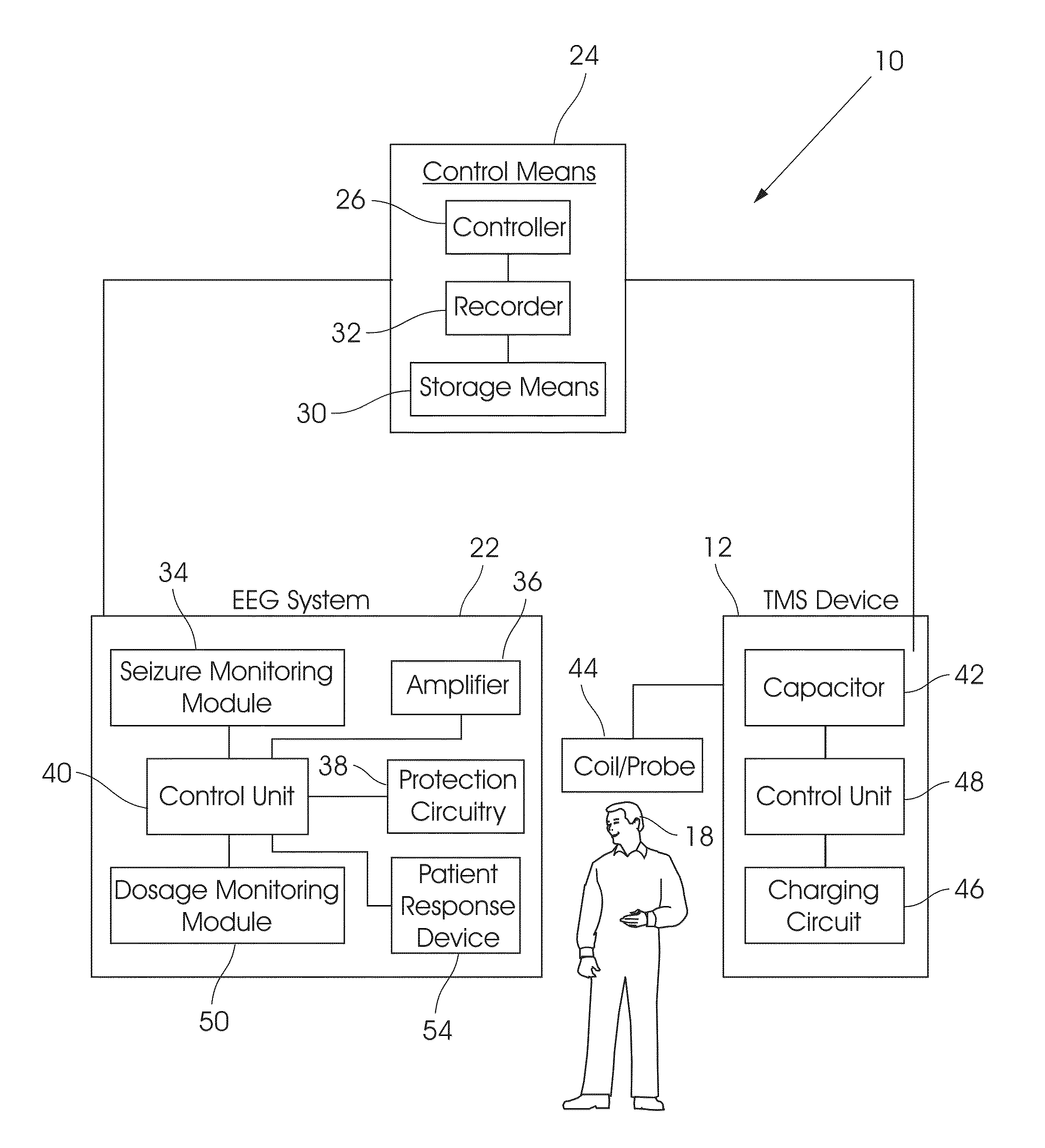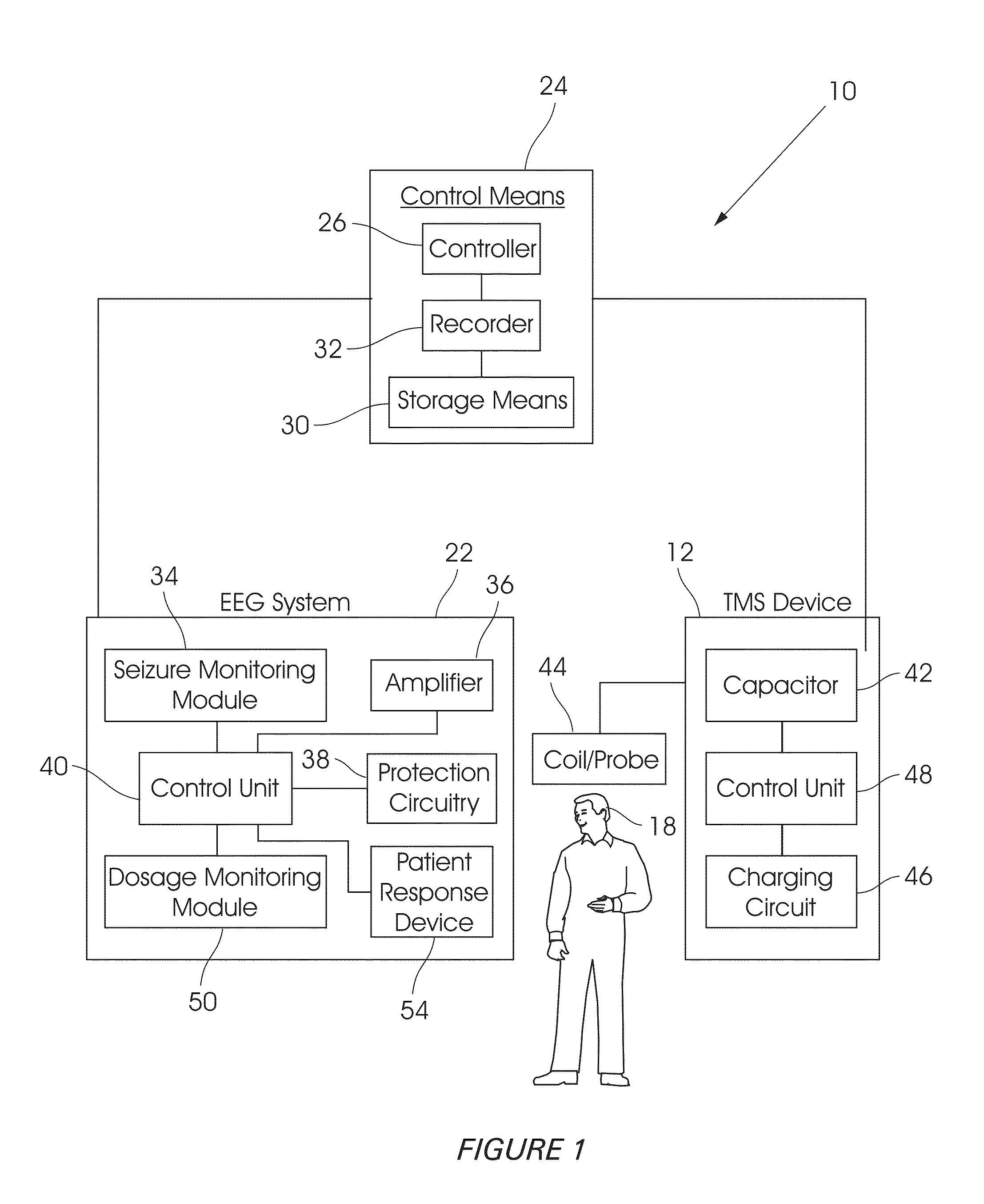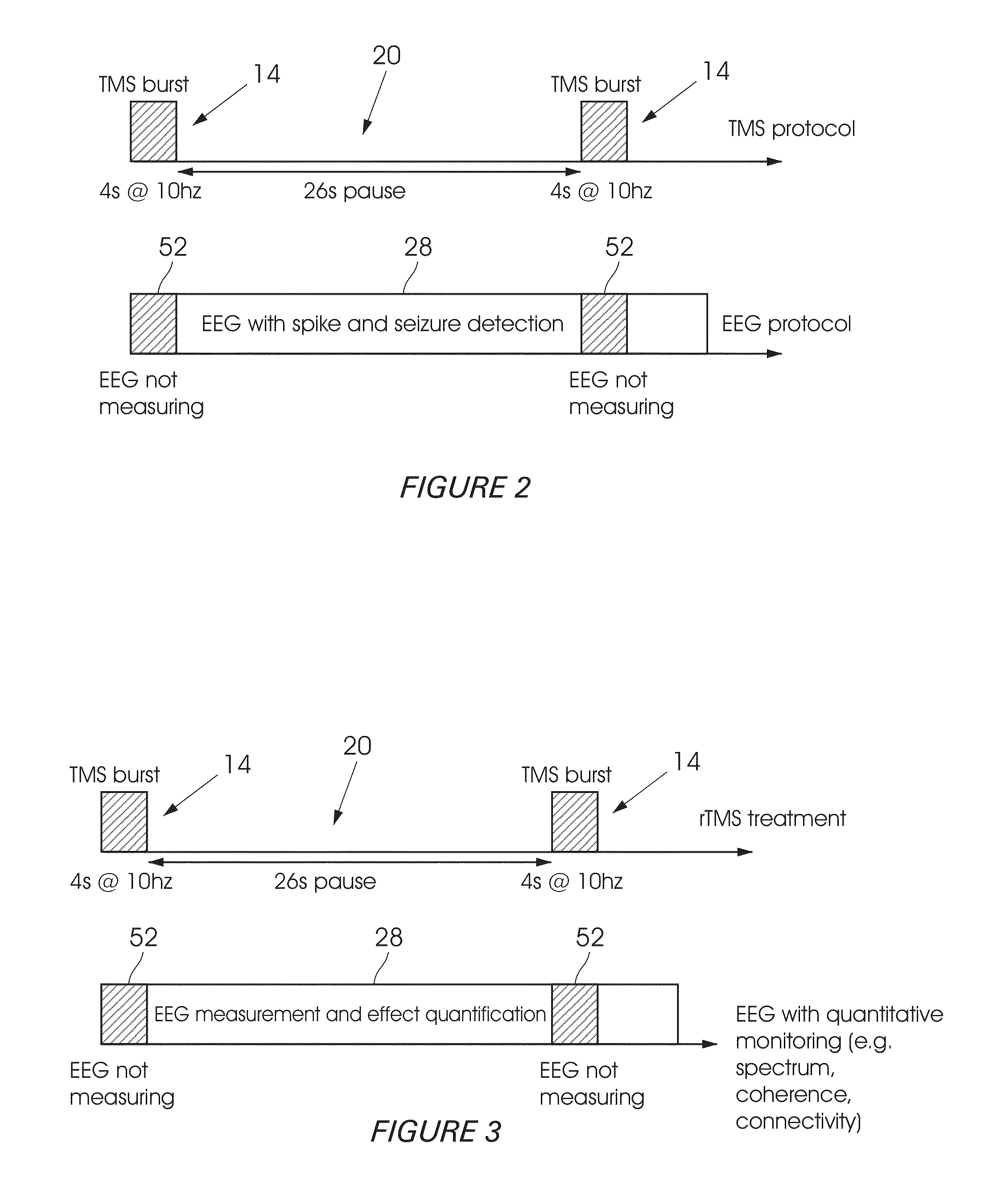Method and system for tms dose assessment and seizure detection
a dose assessment and seizure detection technology, applied in the field of tms dose assessment and seizure detection, can solve the problems of depolarization or hyperpolarization in the brain neurons, high frequency patterns carry a risk of elevated seizure risk, and the effectiveness of treatment is missing
- Summary
- Abstract
- Description
- Claims
- Application Information
AI Technical Summary
Benefits of technology
Problems solved by technology
Method used
Image
Examples
Embodiment Construction
[0057]Referring first to FIGS. 1 to 4, a system 10 for monitoring a patient's EEG (electroencephalogram) during TMS (Transcranial Magnetic Stimulation) is shown. The system 10 comprises a TMS device 12 to generate, when in active state, a plurality of magnetic pulses. The pulses can be applied either as a burst, comprising a plurality of pulses grouped together, as indicated by arrow 14 in FIGS. 2 to 4, or as individual pulses, as indicated by arrows 16 in FIG. 4, to the patient's head 18 in accordance with a TMS treatment protocol.
[0058]Based on established safety guidelines, TMS treatment protocols often combine active stimulation (corresponding to arrows 14 in FIGS. 2 to 4) with long pauses in between (as indicated by arrows 20) in FIGS. 2 to 4. The duration of these pauses often exceeds the duration of active stimulation, as clearly shown. The waiting periods defined by the pauses are to be used for measuring diagnostic data that could be interpreted in real-time and used for gu...
PUM
 Login to View More
Login to View More Abstract
Description
Claims
Application Information
 Login to View More
Login to View More - R&D
- Intellectual Property
- Life Sciences
- Materials
- Tech Scout
- Unparalleled Data Quality
- Higher Quality Content
- 60% Fewer Hallucinations
Browse by: Latest US Patents, China's latest patents, Technical Efficacy Thesaurus, Application Domain, Technology Topic, Popular Technical Reports.
© 2025 PatSnap. All rights reserved.Legal|Privacy policy|Modern Slavery Act Transparency Statement|Sitemap|About US| Contact US: help@patsnap.com



